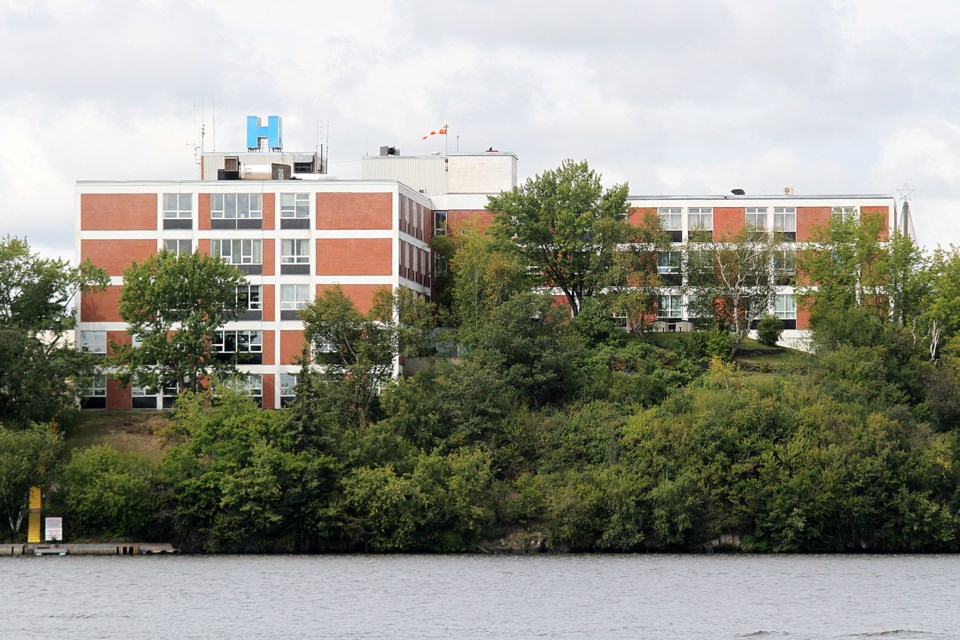Hospital leaders in Northwestern Ontario are expressing concern about health care staffing challenges, particularly after a provincial funding stream for locum doctors has ended.
During the COVID-19 pandemic, the Ontario Ministry of Health saw the need to provide regional hospitals with extra support for locum physicians. The province implemented the COVID-19 temporary summer locum program to take some of the pressure off the hospitals that would otherwise pay out of pocket.
Hospitals in the region would incentivize locum healthcare workers by ensuring their needs are met during their stay. So much so, that regional hospitals would flip the bill on travel costs, accommodation, groceries, and in some cases, entertainment.
However, now that the pandemic has transitioned to the endemic phase, the province has sunset the COVID-19 locum program, leaving many hospitals without the bargaining incentives to attract summer locum employees.
Lake of the Woods District Hospital CEO Ray Racette said he is worried emergency department closures are imminent without support from the provincial government.
"We are more stretched this year than last year. Last year we didn’t think we could get through without facing closure. I would almost call it a miracle of perseverance by our physicians that it stayed open,” Racette said.
Racette said the emergency department at the hospital has has significantly changed over the last few years. In 2021, the hospital was fully staffed with 22 physicians covering the emergency department, however in 2022, that number dropped to 12. Racette predicts that this summer the hospital can drop further to nine physicians.
The hospital has a 60 per cent vacancy rate of emergency department nurses, he added.
Racette said local physicians cover 80 per cent of the ER, while locums cover the other 20 per cent. However, without provincial funding in place for the summer, losing three more physicians will through their already stretched coverage into turmoil.
Currently, the hospital is funding through their budget to ensure they have enough incentives to attract locums to Kenora.
“If we didn’t do that, we would not have to 20 per cent locum coverage we already have,” Racette said.
Without that, the hospital would be competing with rates that are much higher.
“Even next door in Manitoba, on weekends their rate is probably 60 per cent higher than our rate,” Racette said.
Racette said potential emergency department closures would put untold on medical transport services, as patients will be redirected either outside the province, to another community, or to southern Ontario for emergency medical treatment.
“We know the consequences of closure. We are the only hospital with hospital emerge in Ontario that’s within two-and-a-half hours of Winnipeg. The next closest would be Dryden which is two hours away, so we serve a large geographic area,” Racette said.
Elsewhere in Northwestern Ontario, the Geraldton District Hospital has found recent success in recruiting local physicians over the last few months, but as summer inches closer hospital CEO Daryl Galusha said the hospital will have challenges “with continuing to hire” locum physicians.
“I can see hospitals in Northwestern Ontario and across Ontario facing closures. We are asking physicians to put their vacations on hold. We are asking physicians to move away from their families. It’s a challenge and we are not remunerating them appropriately,” said Galusha.
Now the pressure is on regional hospitals to fill the void of locum physicians to ensure that local physicians can maintain their work and life balance.
“People want to live. We try to find a work/life balance with our physicians. They are not strictly machines,” Galusha said.
Geraldton is the only regional hospital that has completely moved away from using agency nurses, but without yearly funding from the province, the cost to the hospital will mean that their yearly budget won’t be balanced.
“We had three back-to-back situations last summer of COVID outbreaks, so that really put us into a deficit position using agency nurses,” Galusha said.
The cost of hiring out-of-area healthcare workers is up to five times higher than hiring locally, Galusha added.
“It’s really challenging to budget. It really challenging to plan for that. But we are looking at a health human resource crisis and we have to address those challenges in recruiting and retaining the staff. We have to make sure everything is fair and equitable among the staff and the communities that we serve and that is of the utmost importance. So, we have to do what we need to do to keep open and that sometimes using the agency resources,” Galusha said.
The Ministry of Health did not respond to our request for comment, but both CEOs said they're hoping the province will provide help.
